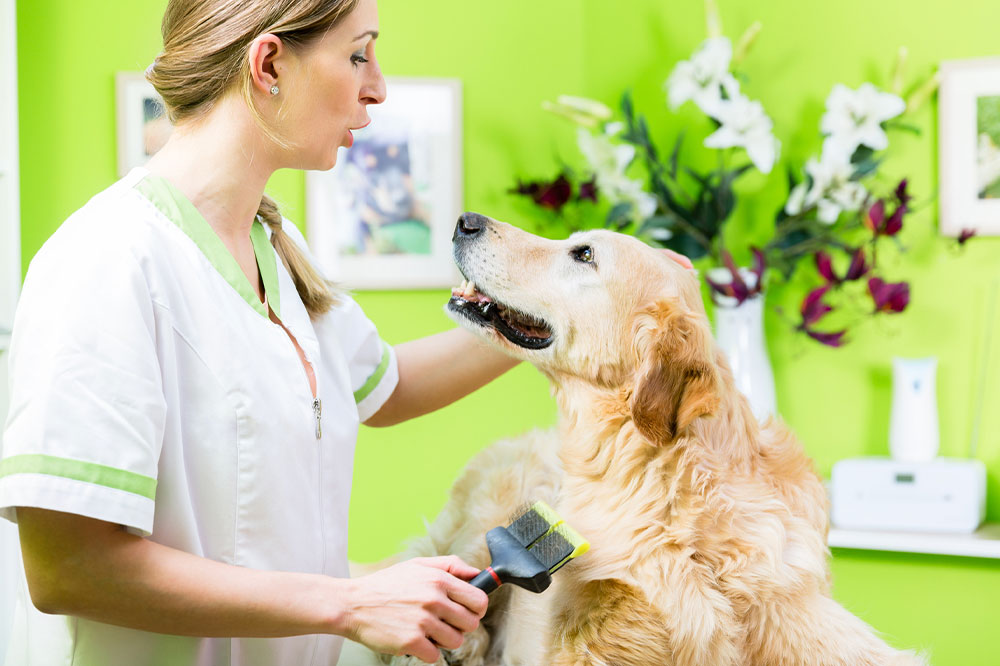4 tips to manage flea and tick infestation in dogs

Dogs get affected with fleas or ticks due to spending time on grassy trails, lush parks, or moist areas. And these pests can cause itching and skin damage if not controlled in time. Flea and ticks leave eggs and larvae on the coat, which can be challenging to eradicate. They can also lead to Lyme disease and other debilitating conditions. Following are tips to manage flea and tick infestation in dogs:
Consider the following treatment options
Bravecto chew
Bravecto chew is a chewable treatment option that you can administer along with your dog’s food. It contains fluralaner, an active ingredient that spreads quickly through the dog’s tissues and the skin. Fleas and ticks in the coat ingest minute amounts of fluralaner, which affects their central nervous system, killing them within 12 hours. One dose of Bravecto is effective for about 12 weeks. If your dog is sensitive to the treatment option and vomits within three hours of ingestion, contact your vet, as it may be less impactful in killing the ticks and fleas. Bravecto is also effective in preventing heartworms and intestinal worms.
Simparica
This prescription treatment option is ideal for dogs over six months and can be administered monthly. Consult your vet for the dosage; do not overdo for faster impact. Simparica contains sarolaner, which effectively controls multiple fleas and tick infestation. You must ensure that your pet consumes the dose completely for maximum impact. Though this option prevents and stays effective for four weeks, it may cause side effects in pregnant, lactating, or breeding dogs and those with neurological issues. Regular use of Simparica can also prevent heartworm disease in dogs.
Advantix
Advantix is a water-resistant, spot-on topical formulation that treats multiple infestations, including fleas and ticks. It is suitable for puppies (seven weeks) and adult dogs. The contents of the package are administered in one spot for dogs less than 25 kgs and three spots for more than 25 kg. The application continues to remain effective even if your dog gets wet. Your vet may suggest the frequency of application based on the type of tick or flea infestation and the severity of the condition. Make sure you bathe and dry them before using Advantix. You can repeat the process after two weeks of application.
In addition to these tips, you can also consider the following information to manage flea and tick infestation in dogs:
Use a flea comb
Though a good bath can remove most of the adult fleas and ticks, young ones and eggs may remain in the skin, mainly in their shoulder blades, between the back legs, and around the neck area. Flea and tick eggs may drop from their fur as they generally do not stick to the skin. Since most dogs enjoy grooming, brush your dog with a pet-friendly tooth comb or a flea comb to isolate and remove the young ones. Collect them in a soap water mixture to prevent re-infestation.
Give them regular showers
Once you spot a flea or a tick in your pet’s coat, immediately bathe them. Use lukewarm water and mild soap to remove the fleas and ticks from their fur and skin. Use a soft towel to dry them without irritating their skin. Check with your veterinarian before choosing the right shampoo or soap. Rinse them thoroughly and ensure that you do not leave any shampoo or soap residue. Repeat the process every one to two weeks, depending on the intensity of the infestation. You can use tick or flea powder a couple of days before the bath. If you use anti-tick oil, gently massage it into their skin before a bath.
Keep your house and surroundings clean
New dog parents may assume bathing and brushing are adequate for managing the infestation. But ticks and fleas may remain in and around your pet’s bedding and resting places. They can also crawl and station themselves between tiles, door or window hinges, under furniture, carpets, upholstery, and curtains. They can crawl back onto your dogs once the effect of the bath or the impact of the anti-tick or flea products wears off. Hence, clean the areas your dogs frequent and their mats and beddings regularly. Use sprays that are non-toxic for them and your family. Continue to clean your house until you see no signs of ticks in your home.
Ticks and fleas do not limit themselves to the house; they can be found outdoors too. If you notice a flea or tick around the yard, you must start cleaning it. Ensure that your yard or lawns are not too moist, as fleas and ticks thrive in these damp areas. Remove dry leaves and trash, wood piles, excessive foliage, and tall grass as full-grown fleas and ticks may breed and lay eggs. Cedar naturally repels fleas and ticks, so you can mulch your dog’s resting areas. Treat your lawn with non-toxic pesticides for any pest infestation.
If your dog still suffers from the effects of ticks and fleas, it is recommended to consult a vet for effective support in treating them. Ignoring the condition may lead to further complications.



